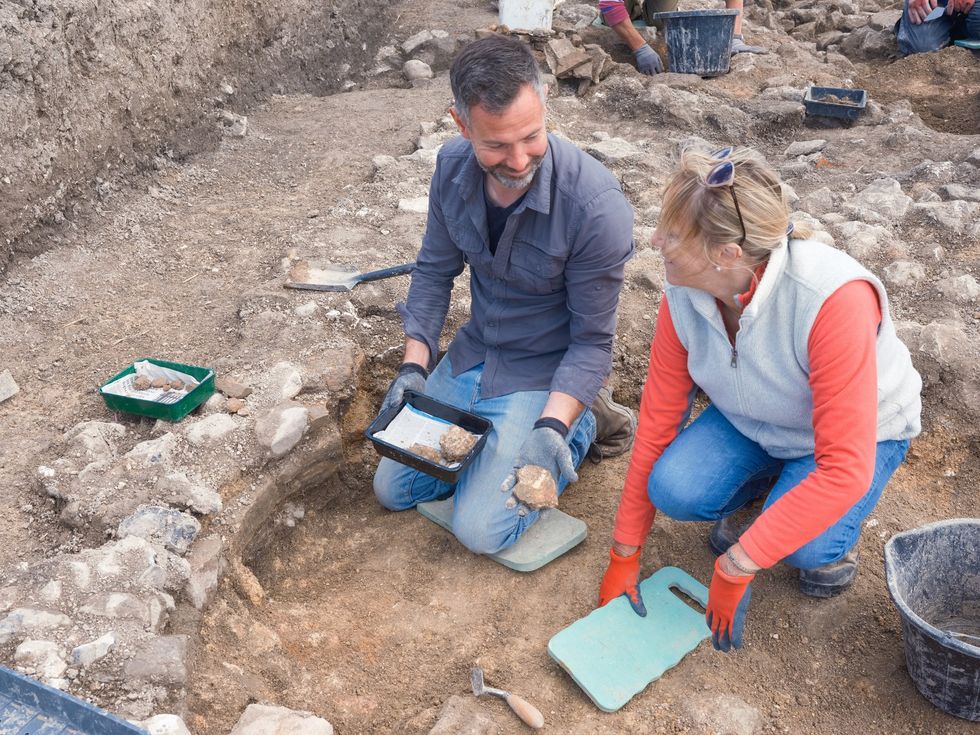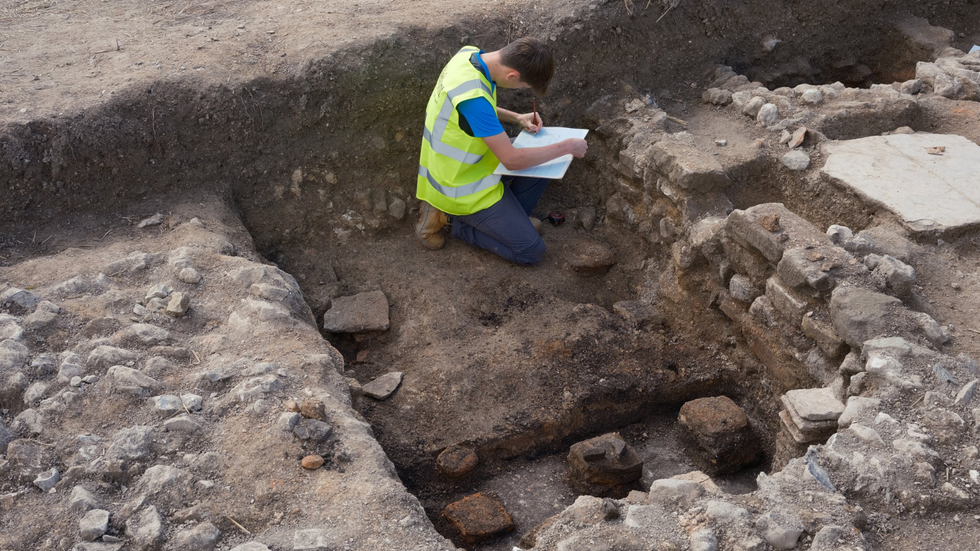A remarkable Roman villa complex has been unearthed in Wiltshire’s Chalke Valley, marking the first discovery of its kind in the area.
The excavation, carried out by seasoned archaeologists and dozens of volunteers, came after metal detectorists reported several significant finds in the region.
The site represents the only known Roman villa in the Chalke Valley – and offers unprecedented insights into luxury living during the Roman period in this part of Britain.
The discoveries are now undergoing analysis before being transferred to Salisbury Museum, where they will help piece together the story of Roman Britain’s wealthy elite.

The site represents the only known Roman villa in the Chalke Valley
TEFFONT ARCHAEOLOGY
The newly-discovered villa showcases a set of remarkable features, and stretches to an impressive 35 metres in length.
The complex includes ornate columns, stunning mosaics and a separate bath house, with archaeologists also coming across what appears to be an outdoor pool.
Dr Denise Wilding of Teffont Archaeology, which led the excavation, said: “They’ve put some time and money into making it quite a nice place to be.”
“The villa and bath house were really well done-out,” Dr Wilding added, noting discoveries of wall plaster, intricate mosaics and a column base.
MORE ARCHAEOLOGY BREAKTHROUGHS:

‘They’ve put some time and money into making it quite a nice place to be,’ Dr Wilding
TEFFONT ARCHAEOLOGY
The findings also demonstrate how native elites began turning to Roman culture, with Dr Wilding observing: “The owners are clearly trying to tie themselves into quite a Roman way of living.”
Dr David Roberts from Cardiff University, who co-directed the dig, explained: “The site was likely the centre of a significant estate in the later Roman period, and its owners must have extracted a great deal of labour and surplus from the local farming communities to fund their luxury lifestyle.”
Beyond the luxurious aspects, archaeologists are examining more modest finds to understand daily life at the villa.
Seeds and animal bones discovered at the site will provide valuable information about farming practices, including the types of crops grown and livestock raised in Roman Britain.
The discovery journey began when metal detectorists reported their finds to Salisbury Museum through the Portable Antiquities Scheme.
These initial discoveries prompted further investigations, which revealed evidence of buildings at the site.
The excavation was made possible through funding from the Cranborne Chase National Landscape’s Chase & Chalke Landscape Partnership Scheme.
The project brought together 60 volunteers who worked alongside professional archaeologists to uncover the villa’s remains.
Dr Wilding praised the contribution of the volunteer team, saying: “Our volunteers do a fantastic job of everything we ask them to.”
The findings are currently being analysed before they will be permanently housed at Salisbury Museum.